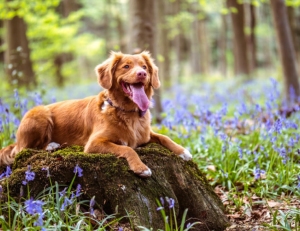
As a result of bone and muscle deformities, joint pain is a reality in many pets and can sometimes require surgery to cure. The first few days after pet orthopedic surgery can be very difficult for a dog or cat. It will require you to be around a lot as they are more sensitive at this time. Their reactions will be very similar to when humans are in pain, only that they cannot convey their pain in words. You will have to determine how they are feeling through their gestures.
What Does an Orthopedic Surgery Consist Of?
Orthopedic surgery is the surgical repair of problematic bones and joints, caused by a congenital condition damaging the joint or due to trauma.
Postoperative care requires sufficient time and patience; the recovery and healing process could take a lot of time since the surgery is so intense and invasive. If your pet needs or has had surgery of this nature and you are curious to know how you can help with the pain, here is a guide for your pet’s pain management after the orthopedic procedure.
Medication
Before leaving the veterinary clinic, make sure you understand the medication required for pain management. Look for any adverse effects in your pet’s behavior after the medication is given. Also, any reaction should be immediately reported to the vet. Antibiotics are not usually prescribed, but it is okay to use them if the vet prescribes them.
Limit Your Pet’s Activity
After your pet’s orthopedic surgery, it is necessary to limit its activity. This includes not taking your pet for a walk, not letting your pet jump around and not allowing it to go up and down the stairs. A vet will often prescribe medication for an ailing pet. If your pet is taking medication, then it will spend most of its time sleeping. This will ensure a fast and safe recovery.
Nutrition
Since your pet’s activity and movement is limited, its food intake should also be carefully managed. Eating enough food is essential for your pet’s recovery. However, too much food could negatively impact its digestive system. You should do what you can to guarantee your pet’s daily food intake is similar to the amount of energy it exerts.
As studies on CBD and arthritis in animals show natural remedies to assist with a pet’s pain do work. In fact, cannabis oil products help to manage any discomfort an animal is suffering from.
Create a Safe Area for Your Pet
Find a quiet area for your pet, so that it can rest calmly without being distracted. It is better if the area is contained. A pet orthopedic bed or washable padding bed can be placed in a dog cage or corral. If you have other pets, make sure to keep them away from the one who recently had surgery.
Always Follow the Advice of Your Veterinarian
It can take months for your pet to recover from orthopedic surgery. Therefore, it is crucial to take good care of your dog or cat after an orthopedic surgery. Make sure you consult with your veterinarian about the dos and don’ts after the surgery and follow them religiously. Do everything he or she instructs to speed up the recovery process.
Pain management in pets is similar to humans. Post-op care ensures that the incision is not infected and recovery is on the right track. Consult with your vet for a complete pain management guide.
Shift Frequency © 2021 – Pain Management after
Pet Orthopedic Procedures
